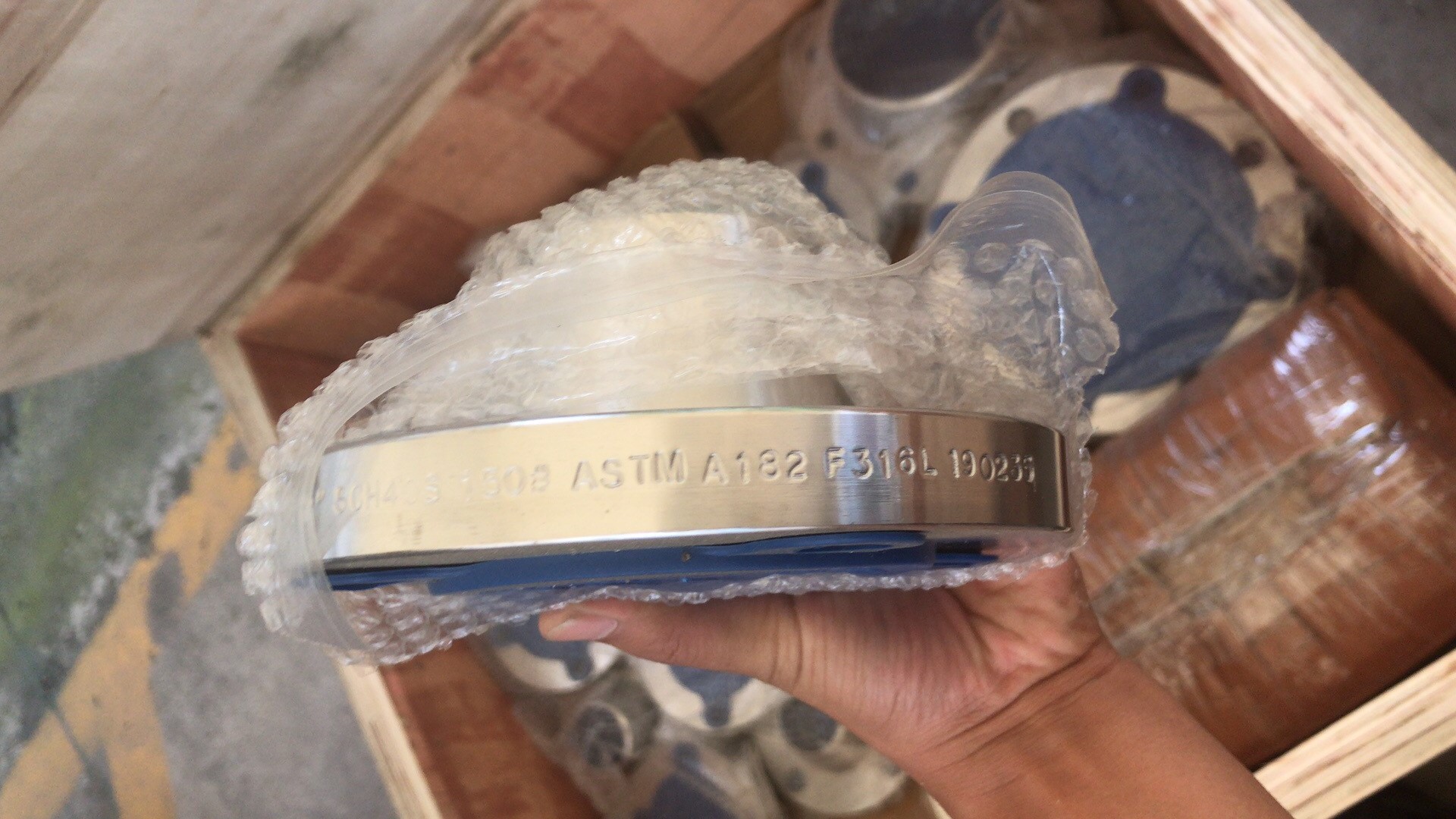ASTM A182 F316 F316L RF Weld Neck Reducing Flange
- Material:ASTM A182 F316/F316L
- Production Detials:RF Weld Neck Reducing Flange 3" x 2"
- Product standards:ASME B16.5
- Min.Order Quantity:1 Piece/Pieces

duplex stainless steel 316 316L WN welding neck flange as per ASME B16.5
1. 316L heat treatment
Heat Treat Type
| Austenitic Stainless Steels | |||||
| Grade | Heat Treat Type | Austenitizing/solutoning temperature, Minimum or Range, ℉{℃} | Cooling Media | Quenching Cool Below℉{℃} | Tempering Temperature, Minimum or Range, ℉{℃} |
| F316 | Solution treat and quench | 1900{1040} | liquid | 500{260} | Not applicable |
| F316L | Solution treat and quench | 1900{1040} | liquid | 500{260} | Not applicable |
| Grade/Indentification Symbol | UNS Designation | C | Mn | P | S | Si | Ni | Cr | Mo | Cb | Ti | Other elements |
| F316 | S31600 | 0.08 | 2.00 | 0.045 | 0.030 | 1.00 | 10.0-14.0 | 16.0-18.0 | 2.00-3.00 | ... | ... | N:0.10 |
| F316L | S31603 | 0.030 | 2.00 | 0.045 | 0.030 | 1.00 | 10.0-15.0 | 16.0-18.0 | 2.00-3.00 | ... | ... | N:0.10 |
| Grade/Indentification Symbol | Tensile Strength, min, ksi(MPa) |
Yield Strength , min, ksi(MPa) |
Elongation in 2 in.(5mm) or 4D, min, % | Reduction Area, min, % | Brinell Hardness, HBW, unless otherwise indicated |
| F316 | 75(515) | 30(205 | 30 | 50 | |
| F316L | 70(485) | 25(170) | 30 | 50 |
2. The difference between duplex stainless steel 316 and 316L
Both 316 and 316L stainless steel provide an extra level of resistance to atmospheric corrosion, to many organic and inorganic chemicals and to food and beverages.
We can process this steel to fit your applications using our in house processing capabilities and service on your timeline.
The difference between 316 and 316L stainless steel is that 316L has a .03 max carbon and is good for welding whereas 316 has a mid range level of carbon.
316 and 316L are austenitic alloys, meaning that these stainless steel products gain corrosion resistance from use of a nonmagnetic solid solution of ferric carbide or carbon in iron in the manufacturing process.
In addition to chromium and nickel, these alloys contain molybdenum, which also makes them more corrosion resistant. Even greater corrosion resistance is delivered by 317L, in which molybdenum content increases to 3 to 4% from the 2 to 3% found in 316 and 316L.
These alloys are known for their excellent welding properties, joined by both fusion and resistance processes. The 316L low carbon version is preferred in corrosive environments. It is important to make sure that copper and zinc do not become contaminants at the site of welds, as this can create cracking.
It is common to fabricate 316 and 316L into many different shapes. They may be formed on equipment similar to carbon steel, and are readily blanked and pierced. Excellent malleability means they perform well in deep drawing, spinning, stretching and bending.
| Type | Raised Face |
| Nominal Size | 3 in |
| Inside Diameter | 3.07 in |
| Outside Diameter | 8-1/4 in |
| Thickness | 1.12 in |
| Bore Size | SCH 40/STD |
| Bolt Circle Diameter | 6.62 in |
| Number of Bolt Holes | 8 |
| Bolt Hole Size | 0.88 in |
| Pressure Class | 300 lb |
| Hub Diameter | 4.62 in |
| Length Through Hub | 3.12 in |
| Material | 316/316L Stainless Steel |

Please fill in your procurement needs and contact information